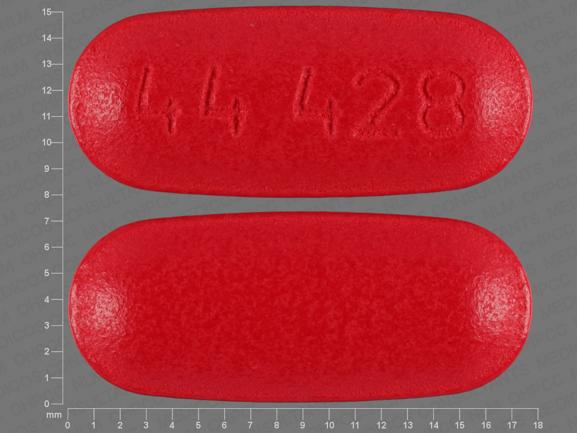Acetaminophen / Caffeine Dosage
Medically reviewed by Drugs.com. Last updated on May 2, 2025.
Applies to the following strengths: 325 mg-65 mg; 500 mg-65 mg
Usual Adult Dose for:
Additional dosage information:
Usual Adult Dose for Cold Symptoms
12 years of age or older:
Initial dose: Caffeine 130 mg-acetaminophen 1000 mg orally every 6 hours as needed
Maximum dose: Caffeine 520 mg-acetaminophen 4000 mg orally in 24 hours
Use(s): For the temporary relief of the minor pain of headache, sinusitis, colds, muscular aches, menstrual discomfort, toothache, and arthritis pain.
Usual Adult Dose for Dysmenorrhea
12 years of age or older:
Initial dose: Caffeine 130 mg-acetaminophen 1000 mg orally every 6 hours as needed
Maximum dose: Caffeine 520 mg-acetaminophen 4000 mg orally in 24 hours
Use(s): For the temporary relief of the minor pain of headache, sinusitis, colds, muscular aches, menstrual discomfort, toothache, and arthritis pain.
Usual Adult Dose for Osteoarthritis
12 years of age or older:
Initial dose: Caffeine 130 mg-acetaminophen 1000 mg orally every 6 hours as needed
Maximum dose: Caffeine 520 mg-acetaminophen 4000 mg orally in 24 hours
Use(s): For the temporary relief of the minor pain of headache, sinusitis, colds, muscular aches, menstrual discomfort, toothache, and arthritis pain.
Usual Adult Dose for Pain
12 years of age or older:
Initial dose: Caffeine 130 mg-acetaminophen 1000 mg orally every 6 hours as needed
Maximum dose: Caffeine 520 mg-acetaminophen 4000 mg orally in 24 hours
Use(s): For the temporary relief of the minor pain of headache, sinusitis, colds, muscular aches, menstrual discomfort, toothache, and arthritis pain.
Usual Adult Dose for Sinusitis
12 years of age or older:
Initial dose: Caffeine 130 mg-acetaminophen 1000 mg orally every 6 hours as needed
Maximum dose: Caffeine 520 mg-acetaminophen 4000 mg orally in 24 hours
Use(s): For the temporary relief of the minor pain of headache, sinusitis, colds, muscular aches, menstrual discomfort, toothache, and arthritis pain.
Usual Adult Dose for Headache
12 years of age or older:
Initial dose: Caffeine 130 mg-acetaminophen 1000 mg orally every 6 hours as needed
Maximum dose: Caffeine 520 mg-acetaminophen 4000 mg orally in 24 hours
Use(s): For the temporary relief of the minor pain of headache, sinusitis, colds, muscular aches, menstrual discomfort, toothache, and arthritis pain.
Renal Dose Adjustments
Data not available
Liver Dose Adjustments
Use with caution in patients with liver disease. Chronic use of acetaminophen is not recommended in patients with liver disease.
Precautions
Safety and efficacy have not been established in patients younger than 12 years.
Consult WARNINGS section for additional precautions.
Dialysis
Data not available
Other Comments
General:
- The recommended dose contains about as much caffeine as a cup of coffee. Caffeine containing medications, foods, or beverages should be limited while taking this product because too much caffeine may cause nervousness, irritability, sleeplessness, and rapid heartbeat.
- Caffeine is a central nervous system stimulant and in cases of caffeine overdose, seizures have been reported.
Patient advice:
- Patients who consume three or more alcohol containing drinks per day should be informed to consult with their physician for advice on when and how to take acetaminophen. Chronic, heavy alcohol users may be at increased risk of liver damage when taking more than recommended dosages.
- A healthcare provider should be contacted if pain gets worse or lasts more than 10 days, a fever lasts more than 3 days, new symptoms occur, redness or swelling are present, or symptoms do not get better.
- Acetaminophen can cause liver damage. Patients should not take more than 4000 mg in 24 hours, should not take other products containing acetaminophen, or drink more than 3 alcoholic drinks daily while taking this product.
- Patients should be advised to consult with their doctor before continuing to use acetaminophen if symptoms of illness worsen. Although rare, there is the possibility of acetaminophen intoxication on chronic use of the drug, and the symptoms seen during the first phase of intoxication (nausea, vomiting, anorexia, malaise, and diaphoresis) may trigger the use of more doses.
More about acetaminophen / caffeine
- Check interactions
- Compare alternatives
- Reviews (8)
- Drug images
- Side effects
- During pregnancy
- Drug class: analgesic combinations
Patient resources
Other brands
Excedrin Tension Headache, Excedrin Mild Headache, Excedrin Quick Tab
Related treatment guides
See also:
Further information
Always consult your healthcare provider to ensure the information displayed on this page applies to your personal circumstances.


